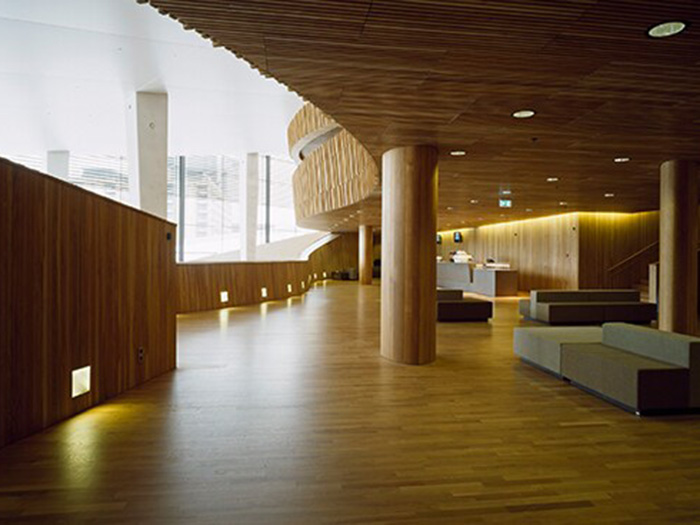Renewables and design: the world’s first “positive-energy� hotel in Norway
Environmental sustainability is a key issue and one that is widely debated, not only in the field of mobility. There’s no shortage of good examples – and the Svart hotel, which will open to the public in 2023 in the north of Norway, is one of them. Detailed studies and innovative construction techniques mean that the building will generate all its own energy, and have a minimal impact on nature.

Mountains, ice, and sea come together in a magical spot to the north of the Arctic Circle. This is where the Svart hotel will be located – at the base of Svartisen, the second-largest glacier in Norway, which runs through the Meløy municipality.
The ring-shaped main body will extend from the foot of the Almlifjellet mountain into the clear waters of the Holandsfjorden fjord. This unspoiled natural location is only accessible by water. A carbon-neutral boat shuttle will connect the hotel to the nearest city, Bodø.
A sustainable project
“An architectural project in such a precious environment brings with it a clear responsibility to protect the site’s natural beauty and its fauna and flora. We wanted to design a sustainable building that leaves only a minimal footprint in this wonderful natural setting”, says Kjetil Trædal Thorsen, founding partner of architect firm Snøhetta.
“Building an energy-positive hotel is a crucial step toward establishing a sustainable travel destination. The design respects the location’s unique features: the rare plant species, the clear waters, and the deep blue ice of the Svartisen glacier”. The name Svart, which in Norwegian means black, pays direct tribute to the glacier (which literally translates as “black ice”).
Energy

Svart will not only use 85% less energy than a comparable hotel built to modern construction standards, but will also generate its own energy – all strictly from renewable sources – making it self-sufficient and sustainable. As the hotel will sit on the edge of a fjord sheltered by mountains, the Snøhetta architects conducted a detailed study of annual sunlight exposure at the location before the project got underway.
This study led to the hotel’s circular design, which means the hotel rooms, restaurants, and terraces are strategically arranged to make optimum use of solar energy throughout the year.
In summer, when the sun is high in the sky, the facades will provide shade, making air conditioning unnecessary. During the winter months, the large windows will let through as much sunlight as possible in order to take advantage of the sun’s natural heat.
Hot and cold
The hotel roof will be clad with Norwegian solar panels, which are made using clean hydropower to further reduce the carbon footprint.
Due to the long summer nights typical of northern latitudes, the building should be able to harvest a great deal of solar energy to help supply the hotel’s energy requirements. The hotel will also use geothermal wells, which are connected to thermal pumps. These will heat the building and reduce overall energy consumption.
Construction

Energy-intensive building materials such as steel and concrete have been avoided wherever possible in the hotel’s design. Local wood will instead be used for the construction and cladding, helping to reduce the building’s environmental footprint even further.
The ring-shaped design will be supported by weather-resistant wooden piles, which will extend several meters below the surface of the fjord. They will give the building its transparent, floating appearance, as well as ensuring construction work has a minimal impact on nature.
Inspired by tradition

The architects were inspired by local building traditions, such as the rorbu, a traditional fishing cabin on stilts, and the fiskehjell, a structure for drying fish on which the A-shaped support beams are based.
A wooden walkway rests on these beams, running between the water and the main body of the building. The structure is high enough for boats and other vessels to pass underneath – ideal for water sports enthusiasts.
The ecosystem
Once completed, the hotel, which will have over a hundred rooms, will be open to overnight guests, day visitors, and the local community. An on-site education and design lab will carry out further research on the hotel’s energy-saving measures.
There are also plans to operate a sustainable farm that will produce hyperlocal ingredients for the hotel’s four restaurants. The project is currently estimated to be completed by 2023.
Source: AUDI AG
